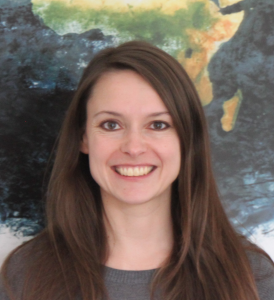Bionote

Lena Brüggemann studied Geography and Environmental Systems and Sustainability at the LMU Munich. Since 2015 she has been working for Vista GmbH. At Vista, we are dedicated to enabling sustainable management of the water-energy-food nexus to improve the global footprint of agriculture and increase the resilience of the food and energy system today to meet the challenges of tomorrow. Our philosophy is to support sustainable, climate-resilient food and energy production. Lena Brüggemann is leading the team “Products and Services”, whose main tasks are the generation and implementation of Earth Observation- and model-based agricultural services, e.g. the simulation of agricultural yields for Agri-PV planning, farm- and site-specific irrigation management or optimized fertilization management.
Presentation Abstract
Agrivoltaics (APV) integrate agriculture and photovoltaic (PV) energy production on the same land, offering potential synergies for both systems. As we move towards large-scale commercial implementation, it is important to quantify the synergies and trade-offs between crop yields and energy production. In addition to PV design considerations, factors such as the type of crops grown, soil conditions, and climate are known to influence crop yields. However, it remains unclear how APV sites with conditions different from those of existing research sites will perform. This presents challenges for assessing the implications for both farmers and APV planners. To address this, we developed a service to simulate the impacts of APV shading effects on crop yields. A new geometric light simulation tool, the “Vista Agri-PV shading model,” was specifically designed to meet the needs of the PROMET crop model, which can simulate plant growth worldwide for a wide range of crops. Agricultural yield prediction simulations for a APV project in France planned by BayWa r.e. were used as a test case. The simulation results revealed significant differences between one-in-portrait and two-in-portrait trackers. The simulated crop yields for the site remained within an acceptable range only for winter wheat and rapeseed with 1P trackers. The addition of the APV shading model enhances the capabilities of the PROMET crop model for APV simulations and paves the way for future development of advanced APV-related data products.
Co-authors: Heike Bach1, Wolfram Mauser1, Erion Bousi2, Stephan Schindele2
1 Vista Remote Sensing in Geosciences GmbH, Germany, www.vista-geo.de
² BayWa r.e. AG, Germany